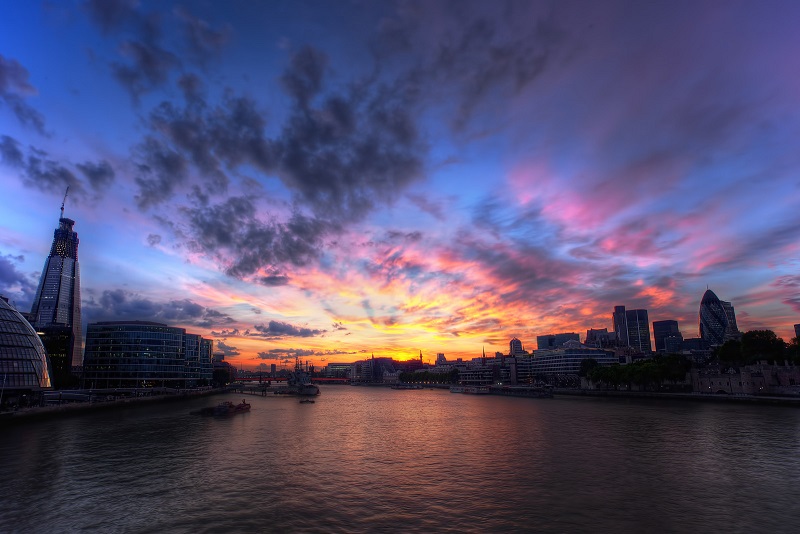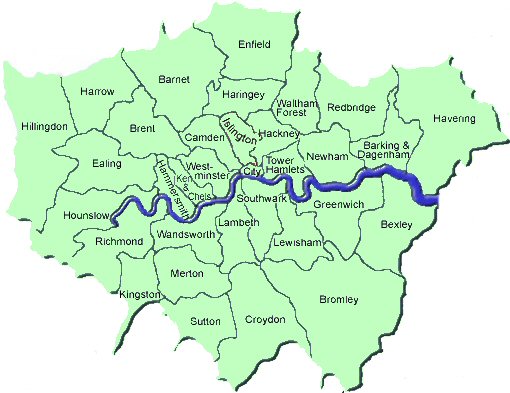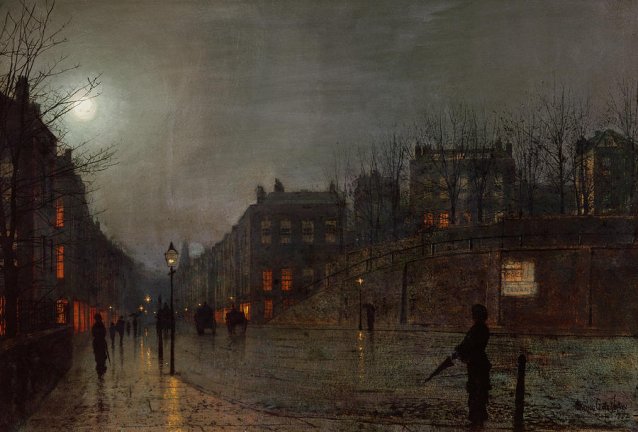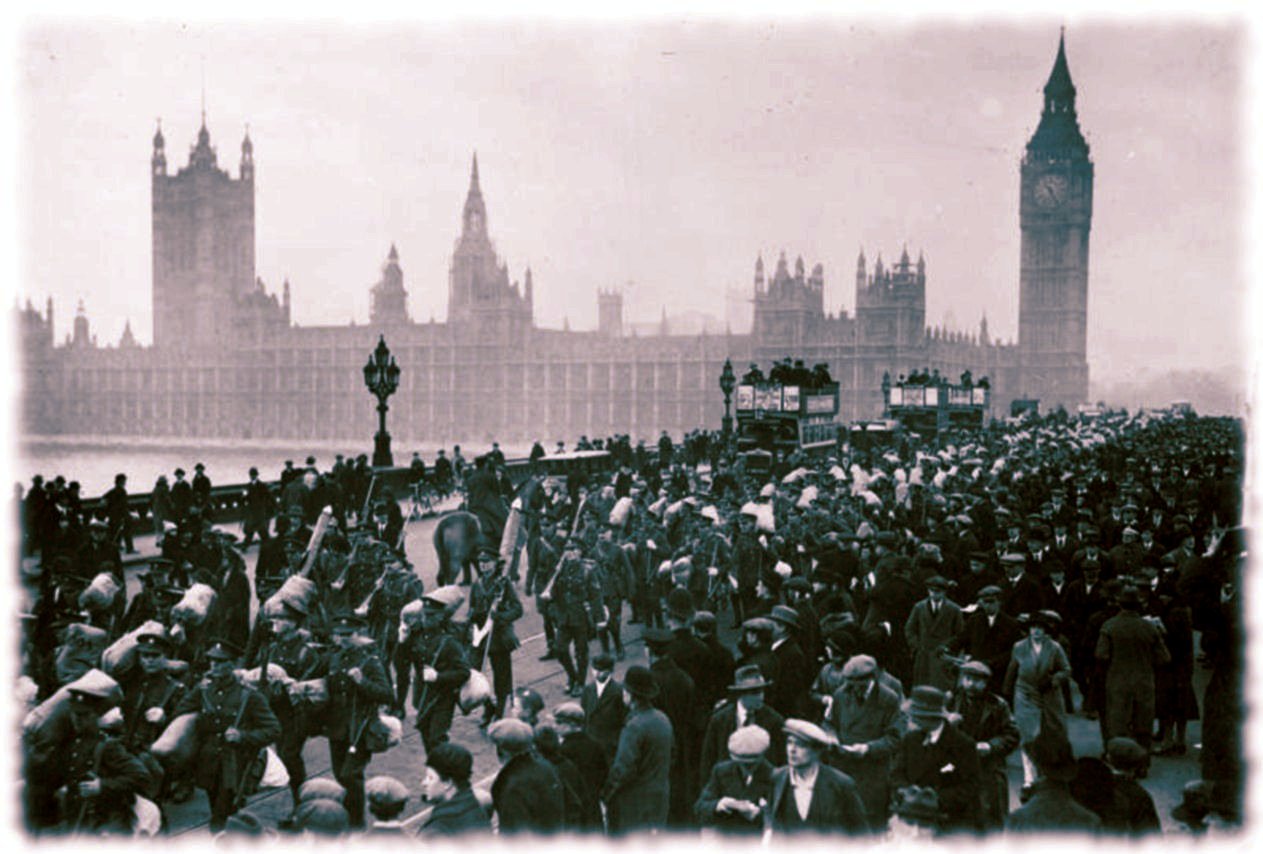London
- British Isles -x- England -X- Secrets: London
Quote
"When a man is tired of London, he is tired of life." - Samuel Johnson
An Introduction to the Capital of Great Britain
- A Note of Welcome
- Dearest Kindred,
- It is with great pleasure that I welcome you to London, the greatest city of the European Union and seat of both Lady Anne Bowesley, Queen of London and the House of Windsor and its heir-apparent Prince William, Duke of Cambridge. I am certain that I do not need to inform a guest such as yourself of the details pertaining to the singular honor the Queen has granted you by giving you leave to remain in this mighty metropolis. You are, for the time being, a welcome guest in this, the greatest of all cities on the face of the Earth.
- Of course, such an honor brings with it certain obligations and responsibilities that I am sure you will find it your pleasure to perform. A society such as ours can function only with the clearest of guidelines and strictures and any violation of said strictures will be met with the appropriate punishment. I hardly need mention the possible severity of such a chastisement. London, both by day and by night, is a city where law reigns supreme. People know their place in society and, while they may work to better it, until they have achieved that worthy aim they do not step beyond those bounds for fear of losing the approbation of their peers. You would, my Kindred, do well to remember that in the coming nights. The particular demands of our own society will be made clear to you in the in the normal way. I feel it is my duty, though, to guide you through the onerous task of dining out in our first weeks in London.
- If I may make a distinction here, one would do well to note the difference between the city, which is London in its wider sense, and the City, which is the square mile within London's medieval city walls in which the major financial business of the city is transacted. Displaying an ignorance of this distinction is a certain way to mark yourself as an uncivilized buffoon from some rural retreat.
- While this letter contains much worthy advice, I would caution you against hoarding it for many nights. Read, learn, and act upon what is within. Then, destroy it utterly, for you know the penalty for transgression against our primary custom. This letter is dispatched to you with the approval of Lady Anne, and the urchin who carried it is tied to us by the oath that cannot be broken. Its security and secrecy are your responsibility and your responsibility alone.
- Dining Out
- As a newcomer to this city, I suspect that it is unlikely that you have made appropriate arrangements for a regular supply of sustenance to your lodgings. I thus offer a few guidelines for a gentleman or lady of our society who seeks to dine with the minimum of fuss and inconvenience. When selecting your repast for the evening, one would do well to consider the social stratification of London society among the kine. They define themselves clearly into three classes, each of which carries its own set of responsibilities and manners of behaving.
- The Working Class
- The lower or working class is composed of those men and women who work with their hands to make a living. They are the laborers, dockworkers, cabbies and cleaners of London. They undertake the manual tasks that keep this city running, yet which require little in the way of higher thought or initiative. Their clothes match their station in life: simple, shoddily fit yet robust and often somewhat dirty. Among themselves, their manner is coarse and bawdy, yet they show due deference to those of higher status within the city, at least upon the surface. Their discussions in the mean and overcrowded slums they call home are of a quite different tone. The dwellings of such folk can be found in particular parts of the city. The East End houses many of them, for example, providing a ready source of menial labor for both the City itself and the transportation hubs that facilitate communication and transaction with the rest of the world.
- Those among us whose manner or linage brands them as part of this lower class will find themselves able to dine easily and freely in such parts of town. They run the risk of consuming a meal tainted by alcohol or the wide variety of drugs that many people of all classes use to distract themselves from the reality of their lives. London can be a harsh mistress for those too weak to or ignorant to seize the opportunities offered, as you will no doubt discover.
- The Middle Class
- The middle classes are those who make their living from the skills of their minds. They are the scholars, businessmen and lawyers of the city; the very lifeblood, if I may venture such a play on words, of London's power and wealth. Most are well educated and some of them, if their fathers or mothers were successful, may well have attended one of the better boarding schools that dot the English countryside. Their clothes are stylish and well made, though they are not prone to the excesses of fashion that often characterize the upper classes. On the whole, they are a dour, serious lot with strong work ethic and traditional and strict moral and religious beliefs that lead them to repress their emotions and passions. This, of course, makes them deliciously easy to manipulate and ideal dining companions for our Kindred.
- Many of the middle classes reside in the center of the city, in areas a short walk from their places of employment. The houses of Mayfair, Knightsbridge and even the better parts of Soho are home to them. Of course, there are other places suitable for such a person, but I will not trouble you with the complexities of London's geography just yet. Many of the middle classes now choose to live in the new suburban areas of London, developing thanks to the rapid growth of London's splendid railway network. Many of our kind have found such places to be suitable location for an evening meal, though one would do well to consult with General Sir Arthur Halesworth before making such a journey. Protocols must be observed in such matters.
- The Upper Class
- The upper classes are composed of those families who have ruled London, England and the whole of the United Kingdom by day for much of the last millennium. They consist of those people whose birthright is aristocracy. They are the lords and ladies, barons, baronets and baronesses of the mortal world. You can be recognize them by their expensive, exquisitely fashionable and beautifully constructed attire, their arrogance and, more often than not, their utter debauchery. Most have enough financial resources to negate the need to work, and so they lose themselves in such pastimes as hunting, politics, military service or sexual adventuring. You should discount them as potential dining partners: to even move on the fringes of their society requires a particular station of birth, significant wealth and a member of the their ranks who is prepared to offer you an introduction. Those of the Kindred who are in a position to do so are often loath to provide such an introduction to one like yourself easily, at least without a significant price being attached to it.
- The upper class's right to rule is unquestioned but rarely exercised. The twin houses of the United Kingdom's parliament, housed in Westminster, work together to create the legislation that determines personal and national destiny. The House of Commons, voted for by men and women of all classes, decides upon the nature of the legislation needed and the house of Lords, in which the men and women of the upper classes sit by right, advise and aid their inferiors by dint of their long experience and noble upbringing.
- Many of our kind feel themselves compelled to build some form of influence over mortal society. If you, too, suffer from this affliction, you would be well advised to steer a course toward the middle classes rather than the upper classes. The reasons for this are twofold. Firstly, the middle classes offer greater influence over the day-to-day running of society, trade and politics. You will find that the right pressure applied on a member of this class can bring a most satisfactory conclusion to pass. Members of the house of Commons are particularly susceptible to pressure of the financial variety. Many of them consider such incentives to be an accepted means of supplementing the stipend they receive for their service in the House.
- A Note of Caution
- Those people who have been knighted by her Majesty and are now known as "Sir" are usually members of the middle classes whose service to the crown has been such that they are subject to special recognition or reward. They occupy a place in society that is both within the echelons of the upper middle classes and the lower upper classes. Thus, they can often be a useful bridge between the two strata of society.
- In Conclusion
- The living people of London are well aware of their place in the social order and are inherently suspicious of any who attempt to move in circles that do not match their standing. Your clothes, manner of speech and bearing will all mark you as a member of a particular class. You should attempt to dine amongst those kine who are of your own apparent class. Any attempt to do otherwise will, unless you are skilled indeed in your choice and manner of dining, attract unwelcome attention and render your chances of remaining within this city somewhat negligible. For example, a gentleman or lady of the middle classes who is found walking the slums of Hackney will be subject to the query and rumor amongst those people who are the lower class, and indeed may attract the attention of the Metropolitan Police.
- I hope that his short work was sufficiently edifying and will prevent any embarrassing misdemeanors in the near future. I look forward to your further education in Elysium in the nights to come.
- I remain, sir or lady, your most obedient servant,
- Stephen Lenoir - E.S.Q.
Appearance
Boroughs of London
The administrative area of Greater London contains thirty-two London boroughs. Inner London comprises twelve of these boroughs plus the City of London. Outer London comprises the twenty remaining boroughs of Greater London.
- Inner London
- City of London -- (A ceremonial city and county within Greater London, which is considered not a London borough.)
- City of Westminster
- Kensington and Chelsea
- Hammersmith and Fulham
- Wandsworth
- Lambeth
- Southwark
- Tower Hamlets
- Hackney
- Islington
- Camden
- Brent
- Outer London
- Barking and Dagenham
- Barnet
- Bexley
- Bromley
- Croydon
- Ealing
- Enfield
- Greenwich
- Haringey
- Harrow
- Havering
- Hounslow
- Richmond upon Thames
- Kingston upon Thames
- Merton
- Sutton
- Lewisham
- Redbridge
- Newham
- Waltham Forest - The domain of the Tzimisce Anastasius
- Near London
- Mentmore Village
- Radlett Town
Climate
Economy
History
Historical Key: Plain "Black" text denotes mortal events, while text in "Maroon" denote Cainite historical events and "Gray" text represent events pertaining to Wraiths and their Grand Necropolis of London.
A Chronology of London - With Reference to Events in Britain
London is without doubt the most important city in Britain and the world, but to examine its history in isolation would be to miss the forces that drove events in London and provided the motivating force for its occupants, rulers and conquerors. As such, this chronology occasionally strays from details of the city itself to the wider scope in Britain (and occasionally, the world). I beg your indulgence in this matter and pray it does not inconvenience you, dear reader.
The Mists of Time
When the first Cainites came to London one cannot say, but mortals had been living in the isles for millennia when the Romans arrived on these shores in 55 B.C. My lord Mithras has told me of Ancients abiding in Britain when he came to these shores, but it does not seem that any yet survive -- or at least are known, or willing to share their knowledge. We know from the annals of Marcus Verus that Gangrel dwelt here, according to legend having pursued "a great betrayer" from the East. Who or what this was I cannot say, and efforts to draw information from the ancient Baron of Chester have been met with hostility. A substantial Ventrue and Brujah population also resided in Britain, perhaps having accompanied the mortal migrations across Europe, or mayhap displaced there by events in the civilized lands of the Mediterranean.
One legend associated with the founding of London builds on such events, claiming that the founders of London came from Asia Minor, fleeing a great war that claimed their city eleven centuries before the birth of Christ. They say that the people followed their great leaders to the edge of the known world, crossing the narrow seas to a cool but verdant land where they sought to rebuild their lost glories. Their city they called Troia Novantum: New Troy. My lord Mithras decries these claims as "unsubstantiated musings" and asserts that the story is a modern invention popularized over the last fifteen hundred years, one that was never heard in the first century after Christ when he came to the isles (the first reference appears to be in the 6th century A.D. in the poems of Taliesin). The pre-Roman name for London, Trinovantum (according to Geoffrey of Monmouth), would seem to lend some credence to the legend, though it was superceded by the more probable, but equally speculative (save for some place names such as Ludgate), Caer Ludd -- Ludd's Fort -- transformed by the imperials into Londinium. Whatever the truth, the Troy origin story appeals to both Kindred and kine, suggesting an antecedent for the city's glory, most recently exhibited in its role as the capital of the empire. But I digress.
19th Century London
The 20th Century
The 21st Century
Much like the 20th, the 21st century has begun with extensive destruction and chaos in London. The difference is that whereas the 20th saw devastation wrought by foreign armies and global catastrophes, the chaos of the 21st has been primarily caused by internal struggles. London saw the worst fighting England's three-way civil war in the 2010's as each faction fortified many of the city's historic monuments in hopes that the others would be unwilling to cause extensive damage to their nations history. For the most part, they were right. Though many of the monuments of London were damaged, few were destroyed or damaged beyond repair. However, the economic catastrophe started by the civil war ensured that London's history would be allowed to further decay.
The perpetrators of an attempted coup in 2031 were not so considerate. Monuments occupied by regime figures were destroyed around the city, most notably the historic Grey Tower itself. Though the responsible parties were quickly rounded up and tried, many Londoners despair at the loss of monuments that define the city's historic identity.
Location
Population
London has not had an effective census for more than two decades, as urban blight and its accompanying crime made a head count nearly impossible. The official 2030 census counted 4,523,000 people, but clearly only counted those in the safer, more affluent neighborhoods, skipping almost all of London's ethnic and racial minorities. The current official estimates were arrived at via statistical sampling based on traffic patterns and satellite data. These methods are widely considered to be cheaper and more accurate than a strict head-count, but the demographers responsible for the calculations have been widely accused to have used assumptions biased toward traditional English (upper-class) patterns, and against the lower classes and minorities. If England had a functioning democracy, it would probably matter more.
- Urban (10,000,000) - 2035 estimate of contiguous urban area.
- Metro Area (11,000,000) - 2035 estimate of of London and the surrounding countryside.
Arenas
- -- O2 Arena
Attractions
Bridges
- -- London Bridge
- -- Tower Bridge
Castles
- -- Banqueting House
- -- Buckingham Palace - The active residence of the British royal family.
- -- Hampton Court Palace - The western most castle, or rather palace of the royals in London, it is most famous for its association with Henry VIII who made it his primary residence. It is not a true castle, but is really a stately palace built in the late renaissance fashion.
- -- Kensington Palace - The favorite residence of the royals until they found favor with Buckingham, it is both a palace and park. It was also the preferred residence of Princess Diana before her death. It is a very popular tourist attraction.
- -- Kew Palace and Queen Charlotte's Cottage
- -- The Tower of London - The first and primary castle built by the Normans after their invasion, it has protected London for over 900 years. (demolished - 2031)
- -- Windsor Castle - Located on the edge of London, the castle serves as a secondary residence for the royals and is very popular tourist attraction.
Cemeteries
Historically, the cemeteries of London were inner city church-yards, that towards the end of the 17th century became increasingly overcrowded and the source of disease and epidemics. In response, seven new cemeteries were built to deal with this problem. Only Bunhill Fields Burial Ground is older, it was built as burial ground for non-conformists, religious or otherwise. Of the eight below, seven are famous, while Nunhead Cemetery seems to languish in ignominy.
The Famous Seven Cemeteries of London
- -- Kensal Green Cemetery -- Est.1832
- -- West Norwood Cemetery -- Est.1837 Seward
- -- Highgate Cemetery -- Est.1839
- -- Abney Park Cemetery -- Est.1840
- -- Brompton Cemetery -- Est.1840
- -- Nunhead Cemetery -- Est.1840
- -- Tower Hamlets Cemetery Park -- Est.1841
London's Other Cemeteries
- -- Bunhill Fields Burial Ground -- Est.1665
- -- Tottenham Cemetary
Churches
Clubs
- -- Brooks's
- -- Carfax Abbey -- Goth Club & Anarch Hangout.
- -- Heathens Retreat -- Goth/Hollower club known for it's mystic atmosphere.
- -- The Carlton
- -- The Marlborough
- -- Merritt House
- -- The Reform Club
- -- The Taurus Club
- -- Whites
- -- X-Club
Casinos
- -- Les Ambassadeurs Club & Casino --
- -- Maxims Casino Club --
Crime
- -- Jack the Ripper
Mafia, Gangs, etc.
Citizens of London
Current Events
Financial Institutions
Galleries
London is one of the most populous cities in Europe and indeed the world, thus, it comes as no surprise that it is a center of art and culture with literally hundred, perhaps thousands of art galleries. As beauty lies in the eyes of the beholder, and there are over 14 million such beholders in London, galleries and what passes for them literally litter the city. Depending on your taste, the quality and quantity of London's art scene varies from night to night, and only a true aficionado would be able to delve the glamorous showroom extravaganzas, glitzy parties showings and cold-water flat revivals to separate the dross from that sublime perfection called art. What follows is a select sampling of London's most famous and enduring art showrooms, some have survived for decades, others for centuries and some may be more immortal than the Kindred who frequent them.
- -- Barbican Art Gallery: Part of the Barbican Centre for arts and conferences, and one of two galleries at the Barbican. The Gallery has a changing programme of major photography, fine art and design exhibitions. Admission charges for exhibitions vary.
- -- Hayward Gallery: Hayward Gallery, part of Southbank Centre on the South Bank of the Thames, has a long history of presenting work by the world’s most adventurous and innovative artists. In addition to putting on major exhibitions and commissioning new artworks in the gallery, the Hayward also organizes projects, installations and talks inside and outside other venues across Southbank Centre. It is the only gallery in the world created in the Brutalist style of architecture – a striking concrete form that Londoners either love or hate. Hayward Gallery has hosted striking exhibitions by Antony Gormley, Dan Flavin, Roy Lichtenstein, Tracey Emin as well as surveys of the Arts Council Collection.
- -- Museum of Contemporary Art: The Museum of Contemporary Art, formerly the Saatchi Gallery was established by Charles Saatchi in 1985. It is well known for controversial contemporary pieces of art and displays of work by relatively unknown artists. In 1992 it held the Young British Artists shows, a fixture for several years where Damien Hirst and Tracey Emin rose to fame. These shows featured Hirst’s famous pickled animals and coloured spots, and Emin’s unmade bed and tent (which was destroyed in a fire in 2006). The gallery was originally housed on Boundary Road, St John’s Wood, and moved to County Hall, Westminster in 2003. Its current site is at the Duke of York’s Headquarters where it has been since 2008. In 2012 the gallery was given to the public and was renamed to the Museum of Contemporary Art.
- -- National Gallery: The National Gallery displays over 2000 Western European paintings from the middle ages to the 20th century. Discover inspiring art by Botticelli, Leonardo da Vinci, Rembrandt, Gainsborough, Turner, Renoir, Cezanne and Van Gogh. The pictures in the collection belong to the public and admission to see them is free. There are special exhibitions, lectures, video and audio-visual programmes, guided tours and holiday events for children and adults.
- -- National Portrait Gallery: The National Portrait Gallery houses the world’s largest collection of personalities and faces, from the late Middle Ages to the present day. Visitors come face to face with the people who have shaped British history from kings and queens to musicians and film stars. Artists featured range from Holbein to Hockney and the collection includes work across all media, from painting and sculpture to photography and video. As well as the permanent displays, the National Portrait Gallery has a diverse programme of exhibitions and free events and a stunning rooftop restaurant with spectacular views across the London skyline.
- -- Royal Academy of Arts: The Royal Academy of Arts, founded in 1768, is the oldest fine arts institution in Britain. Situated in the heart of London's West End on Piccadilly, it is universally renowned for hosting some of the capital's finest temporary and touring exhibitions. Its annual Summer Exhibition, running since the institution first opened, displays select work from up and coming artists and by academicians.
- -- Serpentine Gallery: One of London's best-loved contemporary art galleries, with a programme of modern and contemporary art exhibitions from Andy Warhol to Piero Manzoni, Cindy Sherman and Chris Ofili. Admission free, architectural pavilion with cafe during the summer and an art bookshop in the gallery.
- -- Somerset House: Somerset House is a spectacular neo-classical building in the heart of London, sitting between the Strand and the River Thames. During summer months 55 fountains dance in the courtyard, and in winter you can skate on London's favourite ice rink. Somerset House also hosts open-air concerts and films, contemporary art and design exhibitions, family workshops and free guided tours of spaces usually hidden to visitors.
- The mission of Somerset House Trust is to conserve and maintain Somerset House to the highest standards and to develop the site as a public space which is universally recognized as a world class visitor attraction and centre of excellence for culture and the arts.
- -- Tate Britain: London's Tate Britain holds the largest collection of British art in the world from 1500 to the present day. You'll find masterpieces by Gainsborough, Hogarth, Millais, Whistler, as well as outstanding modern and contemporary artists such as Francis Bacon, Lucian Freud, and Damien Hirst. We also have the largest collection of works by JMW Turner in the world.
- -- Tate Modern: A visit to London isn't complete without a trip to Tate Modern. Britain's national museum of modern and contemporary art from around the world is housed in the former Bankside Power Station on the banks of the Thames. The awe-inspiring Turbine Hall runs the length of the entire building and you can see amazing work for free by artists such as Cézanne, Bonnard, Matisse, Picasso, Rothko, Dalí, Pollock, Warhol and Bourgeois.
- -- Whitechapel Art Gallery: For more than a century the Whitechapel Gallery has premiered world-class artists from modern masters such as Pablo Picasso, Jackson Pollock, Mark Rothko and Frida Kahlo to contemporaries such as Sophie Calle, Lucian Freud, Gilbert & George and Mark Wallinger.
- With beautiful galleries, exhibitions, artist commissions, collection displays, historic archives, education resources, inspiring art courses, dining room and bookshop, the Gallery is open all year round, so there is always something free to see.
- The Gallery is a touchstone for contemporary art internationally, plays a central role in London’s cultural landscape and is pivotal to the continued growth of the world’s most vibrant contemporary art quarter.
Government
The current government of England is a Monarchy acting with emergency powers. A Parliament has not been elected since the beginning of the Civil War in 2015. While there is pressure from the "countryside" to reinstate the constitution and the power of Parliament, there is a very strong royalist movement centered in the capital.
King Arthur I (Born 2014), son of King William V, has took the throne following his father's assassination in 2031. The new monarch's reign has been marked by a distinct return to pomp and ceremony that his father, born into a secular modernism, couldn't take seriously. While his public pronouncements and acts have been open-handed and generous, he either has little control over the bureaucracy that accompanies a national government, or he has a very different agenda behind closed doors. Particularly, his reign has seen a strong bent toward consolodating the power of a select few in the name of protecting the citzenry from robber barons and the greed of the powerful.
While Parliament still exists, the King has been appointing members for the last eleven years. With the Baroness of London pulling some strings, many of the members of Parliament at this time are pawns of her or the Ventrue clan in London. Members of Parliament have been brought from outside, but they are few, and most are soon brought under Ventrue control. Though it is rumored a few are under the control of Princes scattered across the British Isles.
The United Kingdom Peace Officers have been militarized and mobilized strongly in London proper. With UN reinforcements, the UKPO claim to protect the whole city. The reality is that the UKPO do only peripheral patrols in the East End. Recent violence in the city has led to random checkpoints in order to stop the anti-royalist factions in the city. Once out of the inner boroughs, the police presence drops dramatically, reverting to more pre-royalist type enforcement.
Hospitals
Below are a list of 12 hospitals rated highly by a variety of sources.
- -- Great Ormond Street Hospital for Children --
- -- London Bridge Hospital --
- -- Moorfields Eye Hospital --
- -- Royal Free Hospital --
- -- St. Thomas' Hospital -- Located across the river from Parliment
- NHS Trust hospital in Hampstead. The trust offers a major accident service, all branches of surgery and medicine, paediatrics, maternity services, care of the elderly services and an adolescent psychiatric service.
- NHS Trust incorporating St George's Hospital in Tooting, Bolingbroke Hospital in Battersea and the Wolfson Centre for neurorehabilitation in Wimbledon.
- -- The Cromwell Hospital --
- Independent hospital in Kensington specialising in radiotherapy and oncology, liver disease, the Neurosciences and cardiothoracic disorders.
- -- The Harley Street Clinic --
- Oncology unit and acute care hospital also specialising in adult and paediatric cardiac surgery.
- -- The Lister Hospital --
- Private hospital in the heart of Chelsea.
- -- The Portland Hospital --
- London's only private hospital dedicated entirely to women and children.
- Private hospital and acute care facility situated in the heart of Marylebone.
- Leading independent cancer centre specialising in cancer diagnosis, treatment and research.
- -- St Ann's Hospital -- Insane Asylum --
- -- The Wellington Hospital --
- Large purpose-built private hospital located in St John's Wood.
Hotels & Hostels
- -- Claridge's - Mayfair - Est.1812 (as Mivart's Hotel)
- -- Langham Hotel - Marylebone - Est.1865
- -- The Savoy Hotel - The Strand - City of Westminster - Est.1889
- -- Ritz Hotel - Piccadilly - Est.1906
- -- The Dorchester - Mayfair - Est.1931
Hunters
Landmarks
- -- Big Ben
- -- Kensington Palace
- -- The Tower of London
- -- St. Paul's Cathedral
- -- Westminster Abbey
- -- The Ley Convergence of London
Monasteries
- -- Curzon Park Abbey - is one of three monasteries of nuns in the English Benedictine Congregation.
- -- Ealing Abbey - is a Roman Catholic Benedictine monastic foundation on Castlebar Hill in Ealing. It is part of the English Benedictine Congregation.
Monuments
Mortals
- Gregory Mathewson -- Professional Chauffeur & Guide
Museums
- -- The British Museum -- Great Russell Street - Bloomsbury - Borough of Camden - Est.1753
- -- Crossness Engines Trust
Night Life
Exclusive Clubs
Low End Clubs
- -- Garfingles
- -- Pearce House -- Run by Henry St. John
Public Friendly Establishments
Parks
Private Residences
Pubs
- -- Cittie of Yorke
- -- Gordon's Wine Bar
- -- Lamb & Flag
- -- The Blind Beggar
- -- The Dove
- -- The George Inn
- -- The Goat & Compasses
- -- The Mayflower
- -- The Spaniards Inn
- -- The Ten Bells
- -- The World's End
- -- Ye Olde Cheshire Cheese
Restaurants
Ruins
Schools
Shops
Supermarkets
Supernaturals of London
Theatres
Transportation
Airports
- London Heathrow Airport - Located in the London Borough Hillingdon in West London.
Bus Network
Cycling
- Cycling in London has enjoyed a renaissance since the turn of the Millennium. Cyclists enjoy a cheaper, and often quicker, way around town than those by public transport or car, and the launch of the Barclays Cycle Hire scheme in July 2010 has been successful and generally well received.
Ports
Rail System
- The London Underground - The Tube or Underground.
Vampires of London
- The Court of Avalon - London's Camarilla in Exile - London's Camarilla as it stood in 2015, before the Sabbat Takeover.
The Camarilla Resurgent
Those who would rebuild London anew.
The Regents
With Mithras gone and presumed deceased, these three vampires are charged with choosing a replacement Soveriegn of Avalon, and represent the greatest power in Britain. For the moment, they are jointly serving as Regents of London, and have pledged to choose a Baron (and return to their own domains). Their pledge includes a promise not to seek the Barony of London for their own.
- -- Marcus Verus - Baron of Chester and eldest Heir of Mithras.
- -- James Mannerly - Baron of Canterbury.
- -- Rhodry ap Geraint - Baron of Cardiff.
 Clan Assamite
Clan Assamite 
Though rare in Avalon, Assamites have always been honored by its elders. Indeed, it is rumored that Mithras once hosted mighty Haqim himself. In the modern day, Avalon's Baronies are becoming increasingly popular residences for those of Haqim's brood who have fled their eldest sibling for the Camarilla's embrace.
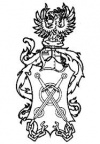 Clan Brujah
Clan Brujah 
Though Avalon has traditionally been dominated by Mithran Ventrue, there is less tension between them and the isle's Brujah than one might expect. Scholars among the Zealots note that Mithras was not present in Rome for the first two Punic wars, and his egalitarian willingness to honor any who showed merit gained the respect and cooperation of some Brujah elders. Still, there are many who see Mithras and his brood as just another clutch of petty tyrants to be overthrown.
- -- James Mannerly - Strong Idealist.
- -- Reginald Moore - Indigent Intellectual.
- -- Penelope Arwin - Gadfly and Hero of Avalon.
- -- Mick Bedger - "Mick the Knife:" London's new Scourge.
 Guilt by Association - No Caitiff in London
Guilt by Association - No Caitiff in London 
- The Admonition -- Written in a spidery Gothic hand with black magic marker on the back wall of one of the Kindred only rooms of Carfax Abbey.
There are no resident Caitiff in London; if there ever were, they were probably killed off or driven out centuries ago. The effete clans of the British Camarilla have no use for the clanless and their kind are hunted and extinguished by the very capable Scourge of London. Those seen in company with one of the clanless will lose station and reputation with the Court of Avalon; those actually aiding the Caitiff are risking their unlives as the existence of the clanless is seen as violation of the Masquerade. Punishment for consorting with or aiding the clanless is punishable by a swift and merciless death at the hands of London's two sheriffs or worse, a general Blood Hunt in which the heart's blood of the offender is the prize.
- -- Renward Black -- Caitiff (claims to be Brujah)
- -- Sheldon Hemp -- Caitiff (14th generation, furtively existing in Cheapside.)
- -- Ricky Smith - Survivor
- -- Rose Dunn - Street Walker
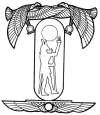 Followers of Set
Followers of Set 
Where there is civilization, there is vice. Where there is vice, there are Followers of Set. Though not welcome, keeping them out of a city the size of London may well be impossible.
- -- Halim Bey -- The Merchant from Alexandria
- -- Patricia Mount-McGovern -- Childe of Halim Bey
- -- Monika Drishti -- Childe of Patricia Mount-McGovern
- -- George Aurther Ferguson -- Childe of Halim Bey
- -- Patricia Mount-McGovern -- Childe of Halim Bey
 Clan Gangrel
Clan Gangrel 
Following the exodus of the Animals from the Camarilla, Avalon remains their greatest bastion of influence within the sect. The memory of Aethelwulf is held in honor, and the ascension of his descendent, Arthur Halesworth, to position of Warlord of Avalon has kept many of his kin interested in Camarilla, or at least Avalonian affairs. Still, comparatively many bestial Gangrel roam the wilds of Wales and Scotland, protected by traditional pacts from encroachment on their territories so long as they remain within them.
- -- General Sir Arthur Halesworth - Warlord of Avalon
- -- Clement Honeycut - "Old Clem." Senior Sergeant, survivor of the Beach of Normandy. Childe of General Sir Arthur Halesworth.
- -- Wilford Hogarth - Fledgling (embraced 2031 by Arthur Halesworth). Former officer in His Magesty's Special Air Service.
- -- Stephen Campany - A fledgling lost in a new world of horror - childe of Bart Felkirk
- -- Gareth Nowles - A refugee of unknown lineage but with a secret patron.
- -- Nort Alder - A refugee from Leeds who chose to stay in the bigger city.
 Clan Giovanni
Clan Giovanni 
Mithras personally banned all Giovanni from London upon pain of death following their assassination of his Seneschal Lord Roger de Camden. Even his dire threats and brutal enforcement did not keep them out of England, or even, if rumor is true, London itself. Now that he is gone, the Giovanni are pushing hard for a place in his city. With the agreement of the Tremere and the Giovanni, the Giovanni have gone public and begun doing what Giovanni do.
- -- Randolf St. John - What's a Giovanni?
- -- Panagoita Melina Childe of Randolf St. John {deceased}
- -- Amy St. John - HIGH class Goth.
- -- Henry St. John - Young looking nephew to Randolf and Amy.
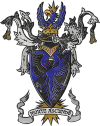 Lasombra Antitribu
Lasombra Antitribu 
With one notable exception, few Lasombra have been known in London.
- -- Stephen Lenoir - Guide to London's Lost. Seneschal of London, by the decree of the Heirs of Mithras.
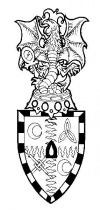 Clan Malkavian
Clan Malkavian 
Malkavians have traditionally been as welcome in Avalon as they are anywhere else. London plays host to the usual array of psychotics, visionaries, prophets and debilitated Lunatics.
- -- Doctor Gordon - Primogen of Clan Malkavian, and childe of Dr. Timothy.
- -- Juliet Parr - Senior Sheriff of London and Hero of Avalon.
- -- Jacob Marley - A conscience for those not so afflicted
- -- Angelina Frey - The Street Jesebel (Childe of Juliet Parr)
- -- Miss Sabrina - Mistress of the Orphans.
 Clan Nosferatu
Clan Nosferatu 
Like Aethelwulf of the Gangrel, Richard Worde's memory commands respect and admiration, reminding more effete vampires that the Nosferatu are worthy additions to their domain. Still, individual children of the modern age will struggle to overcome their most obvious Clan Flaw, or simply avoid their prettier brethren altogether.
- -- Harold Tanner - Primogen and Archivist
- -- Rathe Haversham - Fagan and Master of Secrets.
- -- Hex - Cyberterrorist and Hacker for hire.
- -- Sheelah - A nurse who plies her trade in the most dangerous parts of London.
- -- Griff - An enforcer in the employ of Juliet Parr.
- -- Jin Ix - Childe of Griff.
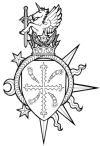 Clan Ravnos
Clan Ravnos 
Like many big cities, the Ravnos are not welcome in London, but accepted so long as they remain out of sight of their "betters." Periodic "treatments" have ensured that London's elders have not become too draconian while acting on their prejudices.
 Clan Toreador
Clan Toreador 
Mithras's traditional antipathy for the Toreador of Edinburgh has left London's native Artistes largely in the cold. There have been surprisingly few Toreador in London over the centuries, largely because of this persecution. Indeed, Mithras banned any Toreador from holding power over any mortal institution. While a few of the most dedicated artists can work under this restriction, most have found ways to move to more hospitable domains. Those in London now will certainly test the limits of the new regime's willingness to enforce Mithras's decree.
- Eric Baring-Gould - Toreador Primogen of London, Granted London Heathrow Airport as his domain by Victoria Lancaster.
- Henry Stern - Renowned Toreador Sculptor )
- Elizabeth Westcott - Female Vocalist / Keyboard Player of Persephone Seed
 Clan Tremere
Clan Tremere 
The Tremere have been at odds with Avalon since their arrival in Britain. First Meerlina then John Dee sparred with Mithras and his agents. The place they earned in London in the 19th century by helping overcome a Sabbat incursion, which was the primary reason Valerius lost his regency over the city, and they were the first to fall to the Sabbat in the 21st. Now, they are pushing hard for a new chantry and the rights usually afforded them in Camarilla cities.
- -- Fatma Uzun - Regent of the 1st circle. Formerly of Istanbul.
- -- Nigel Howard - Apprentice of the Seventh Circle, and Resident Astor.
- -- Doruk Solak - Apprentice of the Second Circle, enforcer. Another Turkish Tremere.
- -- Sri Sansa - The Indian Guru (Was in Sri Lanka, returned to help rebuild)
- -- Frederick Smythe - The enforcer for John Dee that survived the Sabbat incursion. Traveling with Czere Ubireg
- -- Dr. Alastair Barneby - The Warlock Necromancer (Survived DB, just out of Torpor)
- Gargoyles (presented in order of dominance)
 Old Clan Tzimisce
Old Clan Tzimisce 
Only one Tzimisce has ever been known to dwell long in the region of London, and his presence has only barely been felt by the most perceptive of London's residents. All others have found reasons to move on, whether Sabbat or independent. Currently, no new Tzmisce have arrived to stake a claim.
- -- Artemius Anastasius - A ghost in the forest
 Clan Ventrue
Clan Ventrue 
Descendents of Mithras make up the bulk of London's kindred. It is almost inconceivable that the new Barron of London would come from any other stock: There are too many of them, and they are, individually, too ambitious to accept any but one of their own.
Baroness of Greater London
- Victoria Lancaster -- An elder with royal bloodlines.
The Brood of Lancaster
- Kimberly Langston - Ancilla childe of Victoria Lancaster
- Price Durant - A Harpy's Harpy. Childe of Victoria Lancaster
- Harold Grenville - One of many Ventrue business moguls. Childe of Price Durant.
- Clivan Francis - Childe and lover of Price Durant.
Primogen of Blue-Bloods
- D'Arielle Cotentin - Norman childe of Mithras.
The Bowesley Coterie
- Lady Anne Bowesley -- The now officially deposed Seneschal of London remains in torpor for the time being.
- Janos Handoval - The Scientific Adviser to the Queen.
- Nestor Cranston - The Queen's Pet.
- Gardenia Russel - Seneschal Pro tempore of London.
Camarilla Archon and Watchdog for the Ventrue
- Rory McAndrew -- Agent Plenipotentiary of the Camarilla
Masters & Forsyth
- Cyril Masters - An ancilla with a tarnished reputation. (Banished to Glasgow by Victoria).
- Peter Forsyth - Fledgling childe of Cyril Masters. (Banished to Glasgow by Victoria).
The Mancunians
- Janet Latimer - Childe of Baron Shawlands of Manchester, and long-time "Ambassador to London"
- Jeyen Smythe - Childe of Janet Latimer (embraced during her exile in Manchester).
Pennington & Childe
- Adele Pennington - Corporate Mogul and Hero of Avalon.
- Gloria Alder - Fledgling Childe of Adele Pennington.
The Knights of St.James
- Geoffrey St. James - "The Cavalier." An elder who has been absent from London society for more than a century.
- Niles St. James - Mortal descendent and childe of Geoffrey. Known as "The Blue-blood."
Ventrue of Other Lines
- Harold Michael Danvers - Pharmaceutical kingpin.
 The Other Camarilla
The Other Camarilla 
Faramund Magnus - Kai'Sid Scholar
Christoforo Bertrand - Samedi Necronomist
Ricky Smith - Survivor
Rose Dunn - Street Walker
Visitors to the Great Smoke
- -- Natasha Karaljk Scheinberg -- Tremere prophetess
- -- Czere Ubireg -- Warlock guardian of the Masquerade.
 The Sabbat of London
The Sabbat of London 
While the Leadership of London's Sabbat has disappeared along with Mithras, and many of its myriad packs were buried beneath the Grey Tower or hunted down in the streets, several notable figures and packs remain unaccounted for.
The Crimson Bacchanal
- -- Douglas Laird - Bishop of London
- -- Rose Chandler
- -- Freia
- -- Frigga
Isaiah 34
- -- Abraham Trend
- -- Beatrice Roslind
- -- Sybilla Tulla
- -- Manlio Baki
The Coven of Foundlings
- -- Catherine
- -- Snee
- -- Tobias Leveler
The East End Posse
- -- Montgomery (Monty) Coven -- Sabbat bred Assamite. Pack leader of the East End Posse.
- -- Adrian Foss - Lasombra Priest
- -- Melissa Colburn - Toreador Antitribu
Notes: This pack lost two of its members on a raid into Glasgow. That day, their haven was raided by Camarilla ghouls.
- The Would be Antichrist
- -- Dylan Bruce - Black Hand Remover & Infernalist (Captured & Killed in Sofia, Bulgaria - 2002 C.E.)
The Traditions
Vampiric Salons and Organizations
Deceased Vampires of London
- Nathaniel Simmons, the Scourge of London - (deceased: 1901)
- Valerius - former Seneschal of London
- Mithras, the Ancient Prince of London - (The once and future prince - Presumed Dead.)
- Count Dunlop - Bishop of London
- Richard Dunlop
- William Dunlop
- Aurthur Dunlop
-Destroyed by a war party lead by O'Reilly the Mighty
- Lady Astor - Prioress of Shadows, Cardinal of the Western Isles
- Duke of Amber - Archbishop of London
- Duchess of Amber - Bishop of London
-Disappeared through a gate to hell along with Mithras. Each sought, seemingly, to slay the others as they vanished from sight. The blood bonds they held were severed the moment they fell through the gate.
The Secret Histories
- An Introduction to the Author
- My name is Faramund Magnus, I am childe of Marconius the First Kiasyd and Grand-Childe of Lucian who is often referred to as Lasombra in the modern nights. I was born a member of a Germanic tribe know only as the Chauci. My people's ancestral lands lay between the river Weser and the river Elbe. The Romans referred to them as the 'Greater Chauci', probably because our tribes were only partially hostile to the southern invaders, though it is also possible that term came about because my tribe was quite mercenary and hired out as irregulars in the Roman Legions.
- As I espouse an ethic of truth rather than falsehood, I will not regale you with a history of false grandeur. My father and brothers were only lesser chieftains of the Chauci and as a youth I was sold by my brother into the service of the Roman irregulars to insure his succession to what little wealth our father had obtained during his career as a mercenary.
- At the time, I hated my brother, but in retrospect, I should have thanked him with a thousand kisses. Life in the irregulars of the Roman Legions was not a pleasant experience, but it did offer a number of opportunities for an enterprising youth. Unfortunately, I was not an enterprising youth, rather I was ignorant, lazy and quarrelsome and viewed the Romans as pigs. But, I digress.
- Unlike some of the ancient Cainites I have met, I was not a royal hostage given over to Rome's tender care to ensure parental loyalty to the Empire and receiving a classical education into the bargain. No, rather I was of the lowest station in the Empire, save for the position of slave. My days consisted of mind numbing military exercises or in back breaking labor because I could not keep my mouth shut. It was only by chance that I would come to learn the Roman letters, this is not to say that I could not speak the Roman tongue, but rather that I could not read. One could not survive in the Empire without being able to speak the Latin language, though the common tongue of the people was nothing like that of the aristocratic patricians.
- During the late 4th century of the so-called common era, a foederatus or soldier mercenary, such as myself, who fought on the lowest rung of the Legions could expect an exciting, if short life. For that reason, among others, I was invited to join the brotherhood of Mithras. At that time, virtually the entire Roman Army was given over to the faith of Mithras. My invitation to join was not a special invitation, but a opportunity extended to all fighting men. In retrospect, I sometimes wonder why I attended that invitation to join the Brotherhood of Mithras, ultimately, my decision was based more on boredom than any proper reason for attendance. In the end, it does not really matter, I did chance to attend and in the deep places of Rome, I came face to face with a god. It did not happen immediately, nor did it happen quickly, but it did eventually happen.
- How can I describe the sublime glory that was being in the presence of Mithras? The answer is that I cannot, if you have had the honor of meeting Mithras, then you understand my meaning, if not, that honor is not something I can put into words. I had been a brother warrior of Mithras for perhaps ten years when I was invited to a very special occasion: the sacrifice of the bull-woman. In all likelihood, you have no idea of what I speak and it is not my intention to educate you upon that matter at this time. Suffice it to say, that this event was a very rare and extraordinary religious event for the local mithraeum. I came in the company of a lover and fellow warrior for precisely the aforementioned opportunity; you see, the Mithraic mysteries were not a religion of faith, but of experience. Rather than just choosing to believe in abstract deities, the followers of Mithras had to progress through a series of mysteries that would ultimately qualify them to meet their god in person.
- I can tell you this, meeting a god does change your perspective and afterwards, I decided to change my life. After a decade of fighting for the Legions, I was entitled to adjourn my service, receive citizenship and take up a private life. I never saw my brother again, but word did come to me years later that he had died in a border dispute with another tribe, at that time, I offered sacrifices to Mithras and took myself to a brothel to celebrate his life. There is no point in reciting the remainder of my mortal life, the important part was that I had met Mithras, though it would be centuries later, I would meet him again in a faraway land called Britain.
- It was near the end of my life, as my eyesight was waning and my health was poor that I met another sublime being - Marconius. I would not be surprised to hear you admit that you had never heard of Marconius, ignorance is not a crime, though perhaps it should be. Marconius was simply the first Kiasyd vampire, the father of an eldritch bloodline and my sire. But, that is an altogether different story, that you may have the honor of hearing if you survive the curse long enough.
- The final point of my recitation is about to begin, pay attention callow youths. Why would I recite ancient history and what some would call hallowed secrets to a group of simpering neonates? Because a teacher needs a resume. How else can you know that you are not being spoon fed misinformation and propaganda? Mythras is gone, Lady Anne Bowesley sits upon the throne and you were either born into the Court of Avalon or migrated here from some dark, desolate and altogether unimportant hinterland. If you would know the truth or my version of it, then I invite you to stay and by all means take notes as modern educators have completely abandoned the method Loci. Of course, my rational for sharing my rare view of Cainite history remains vague, but perhaps you should chalk it up to an elder's need to share his wisdom in a pedantic and pedagogic fashion or perhaps I just never learned to keep my mouth shut - either could be equally true. I will leave you to decide that for yourself, just remember, the truth comes with a price.
- - Vestra in aeternitate, Faramund Magnus
The Hidden Few
- -- Abraham Mellon - The Magician of Madness
- -- Mithras - The Once and Forever King
The Awakened of Avalon
- Wraiths of Great Britain
Websites
http://mapoflondon.uvic.ca/index.htm (Online map of Shakespeare's London)
http://www.getyourguide.com/london-l57/ghosts-of-london-private-chauffeur-driven-tour-t44681/
http://www.christopherfowler.co.uk/blog/
http://www.londonluxury.com/top10listing.php?name=hotel&catid=5&subcatid=27
http://iloveeventslondon.wordpress.com/
http://www.derelictlondon.com/
http://en.wikipedia.org/wiki/Radlett (While Radlett isn't actually part of London proper, it is close and therefore of interest.)
- Murder Mile in London
http://en.wikipedia.org/wiki/Hackney_Central

